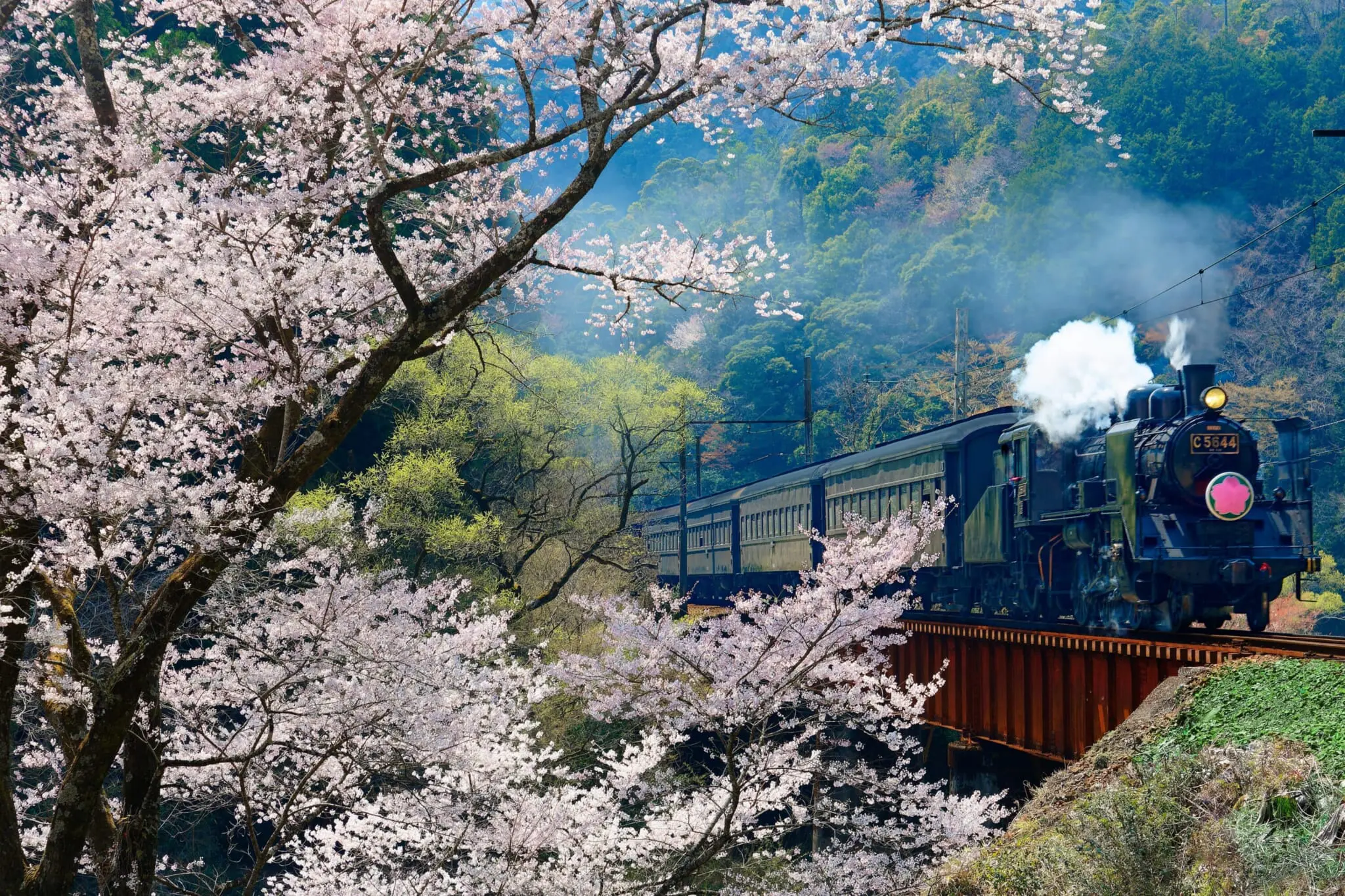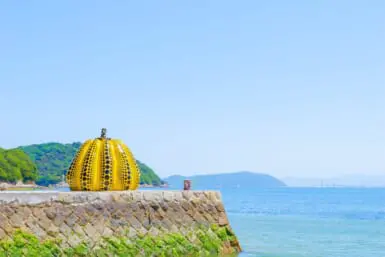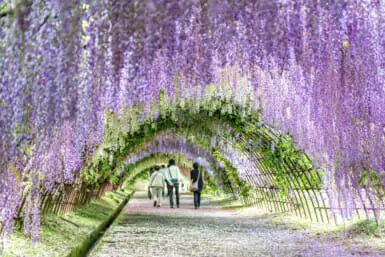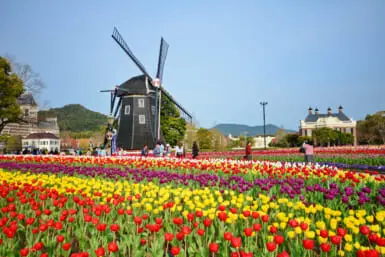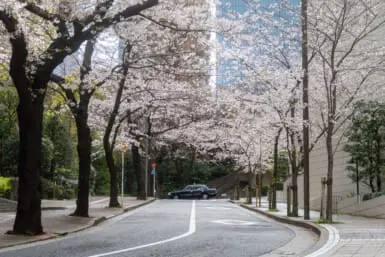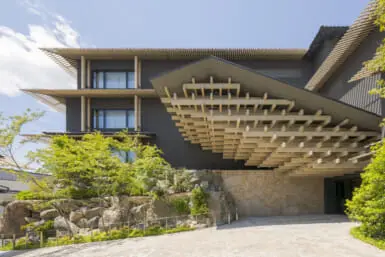The mechanical clunk of old engines, the scent of green tea in the air and the vibrant colors of untamed forests greet you as you arrive in Kawane. Situated in the heart of Shizuoka Prefecture, it feels like a glimpse into old Japan. Traditional buildings are mixed with modern hotels, and every so often the serene quiet is intercut with the whistle and smoke of steam trains.
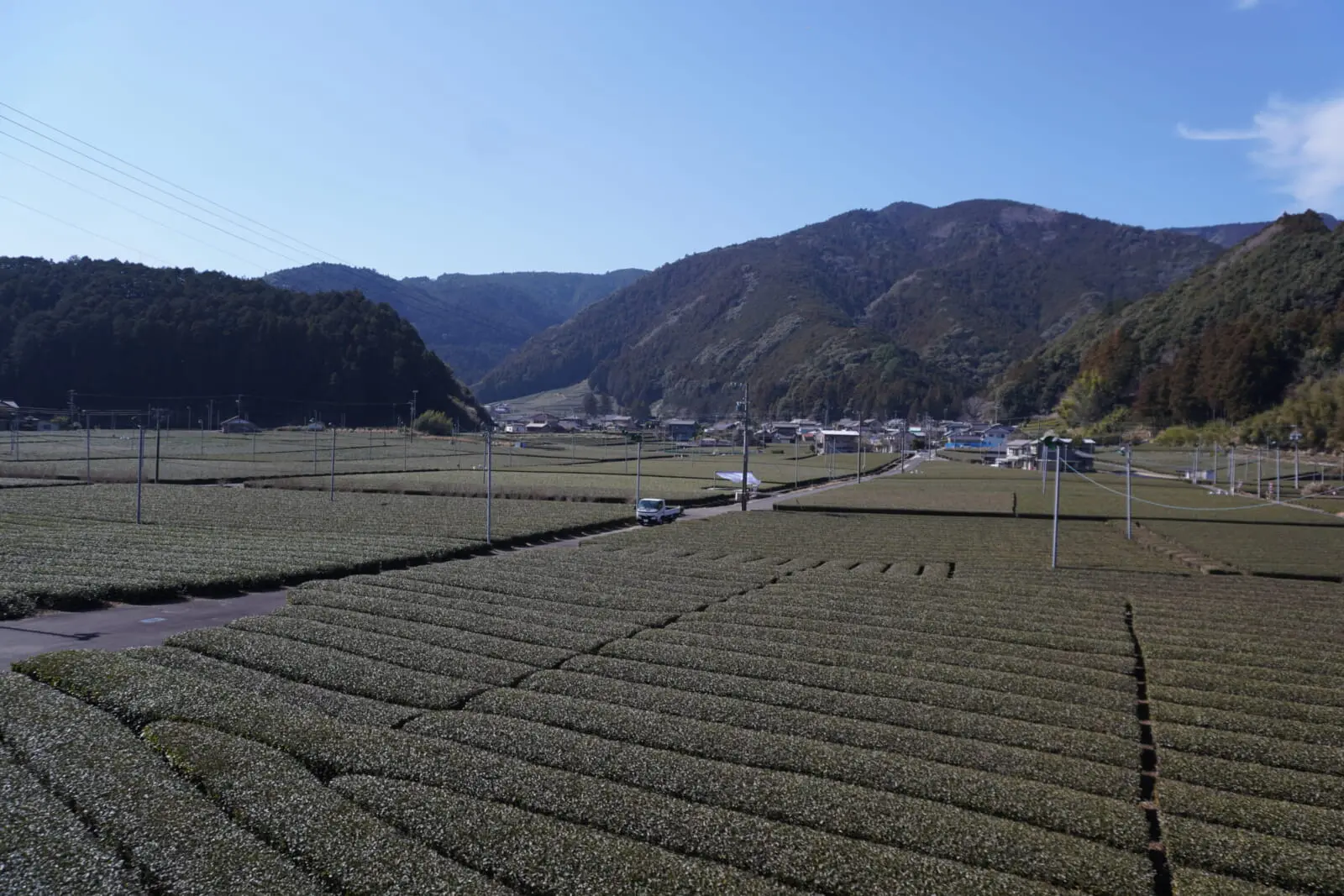
Why a Trip Through Kawane Offers a Perfect Escape from Tokyo
Kawane’s charm is as timeless as it is serene. This nostalgia is well recognized here and has been featured in media depicting old Japan, such as the legendary Otoko wa Tsurai yo series. Yet, Kawane’s true signature is its endless rolling tea fields, thriving in the warm, humid air trapped by the surrounding mountains. These are ideal conditions for Japan’s finest green tea.
Kawane invites you to linger. It is not to be passed through. Life here should be savored, much like its tea. For those seeking a break from the neon-lit rush of Tokyo, Kawane offers silence, space and the kind of hospitality that invites you to stay for a while.
Here’s how to make the most of a weekend in Kawane, from nostalgic train rides to soothing hot springs and, of course, the best tea you are ever likely to drink.
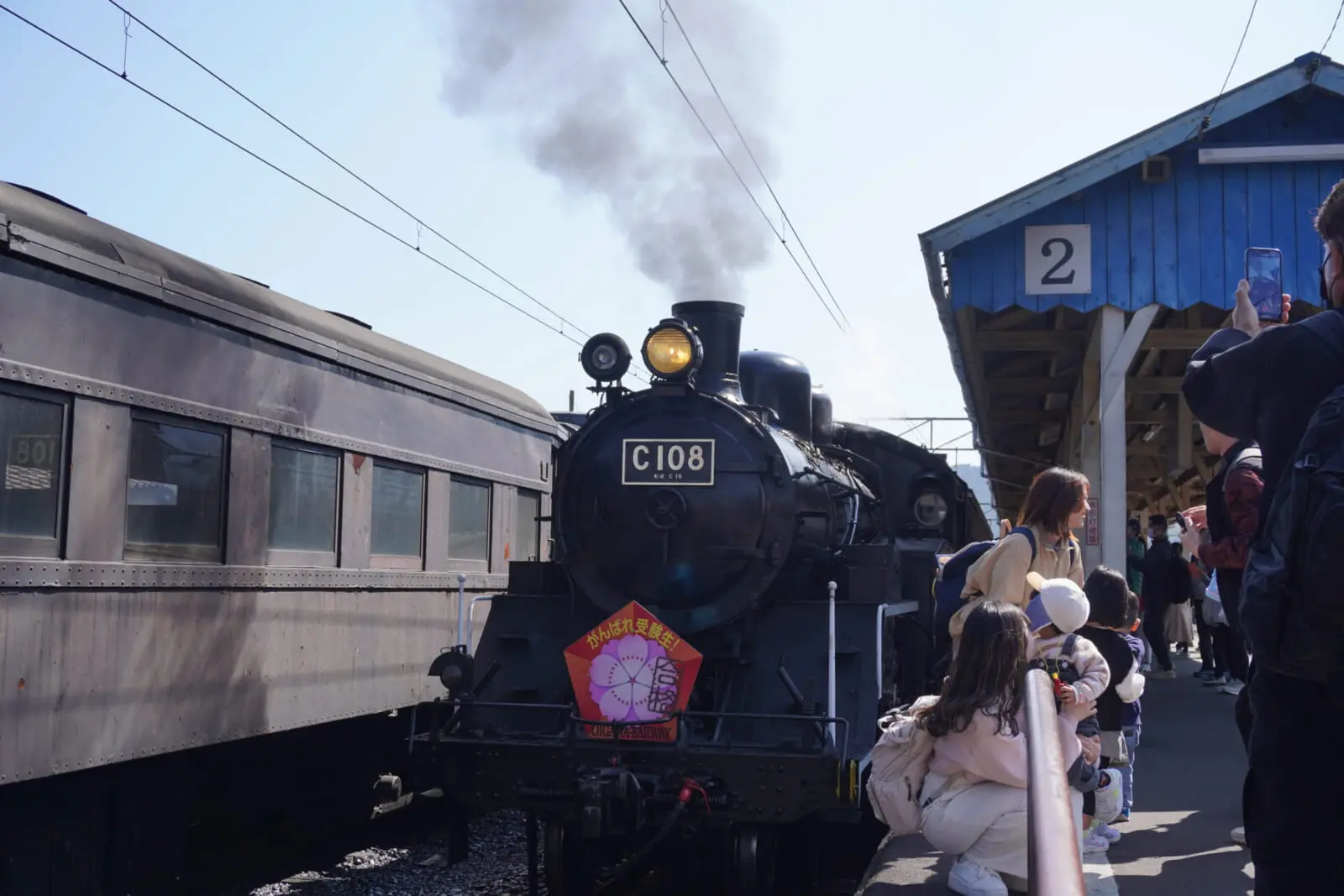
Shin-Kanaya Station: Arriving in Style
The journey begins at Shin-Kanaya Station in Shimada city, about 40 minutes from Shizuoka Station. From there, it’s a short walk to transfer to the Oigawa Main Line and Shin-Kanaya. However, while Shin-Kanaya Station isn’t the easiest to access, it is particularly famous among Japan’s toritetsu (train enthusiasts) for its fleet of steam locomotives (SL).
Built in 1939, the billowing smoke and industrial clunk of machines are an enthusiast’s delight. Expect to see many fans lining up to get the best angle. You’d also be remiss not to bring your own camera to capture the nostalgic charm.
Unlike the bullet trains and metro that rush passengers from location to location, the Oigawa Main Line invites you to slow down. There are no hurried announcements, no overly crowded platforms, just the quiet anticipation of a journey taken at a more thoughtful pace.
For a moment, standing on the platform, you could be in another era. You realize that the journey is as important as the destination. A sharp whistle brings you back to reality as you board. With friendly waves from locals and staff, the train departs. The rhythmic clunk of the wheels grows steadier, carrying you toward your first destination.
All timetables are available in English, and can be found on the Oigawa Tetsudo Line website.
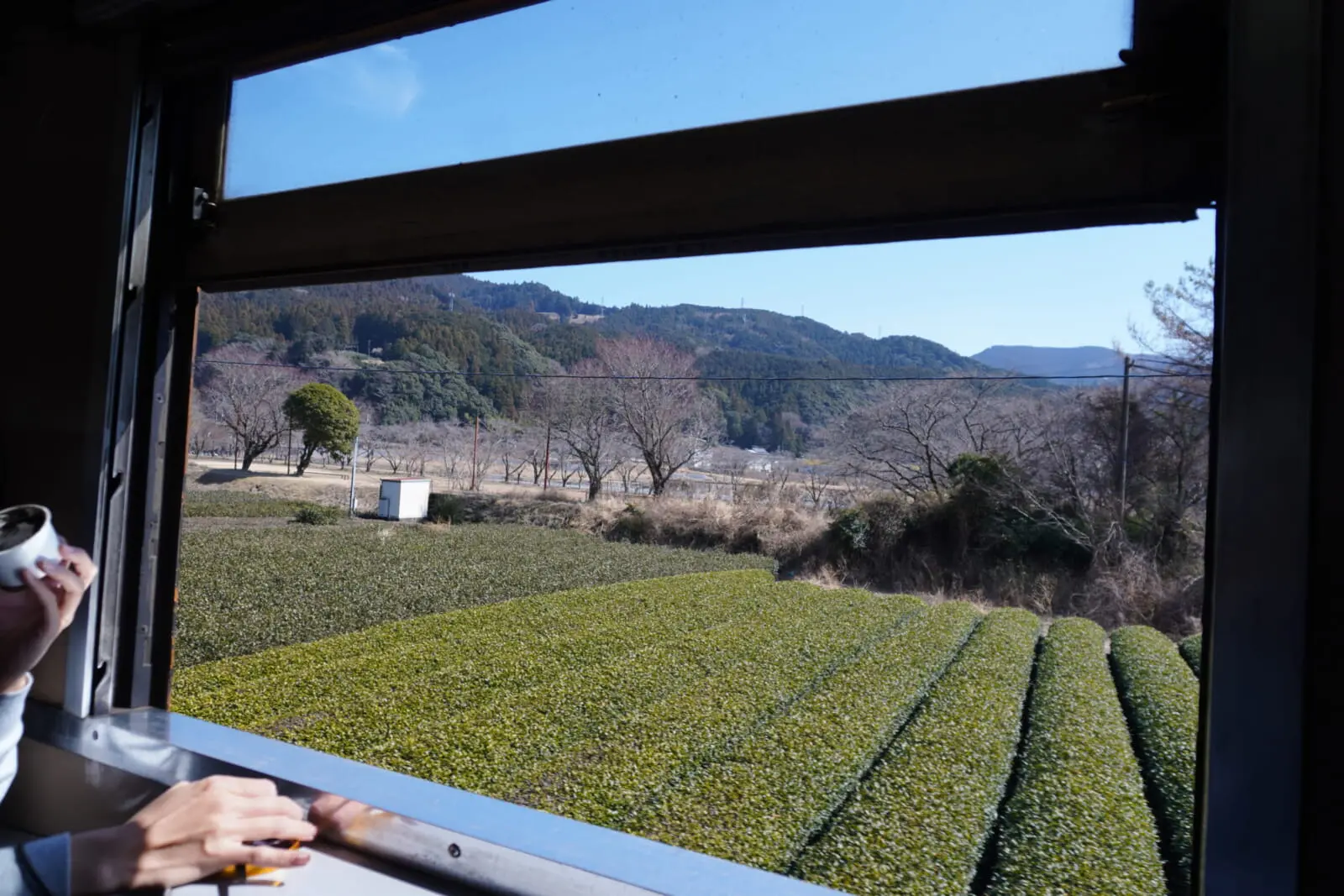
Into the Green Heartlands
The train moves at a deliberate pace, its rhythmic chugging blending with the quiet of the dynamic mountains. It cuts through the valley, following the Oi River as it meanders lazily, adding another layer of depth to the striking Central Alps.
In typical Japanese fashion, not an inch of space is wasted, as fields upon fields of green tea crawl up the sides of the mountain. Growing tea is an art of patience. The leaves take their time to soak in the mountain air, just as visitors here are encouraged to linger.
They are encouraged to sip. To watch. And to breathe. Yet, if you go in spring as March turns to April, the mountains are almost enchanted with specks of silver and pink with the blooming of wild cherry blossoms.
Whether you’re a budding photographer or simply someone who appreciates nature, this view is a reminder that Japan is more than just neon-lit cities and crowded trains. It is also about mountains, rivers and the quiet patience of tea fields.
Of course, the train is serviced with many steam train-themed snacks, such as dorayaki and charcoal black SL ice cream.
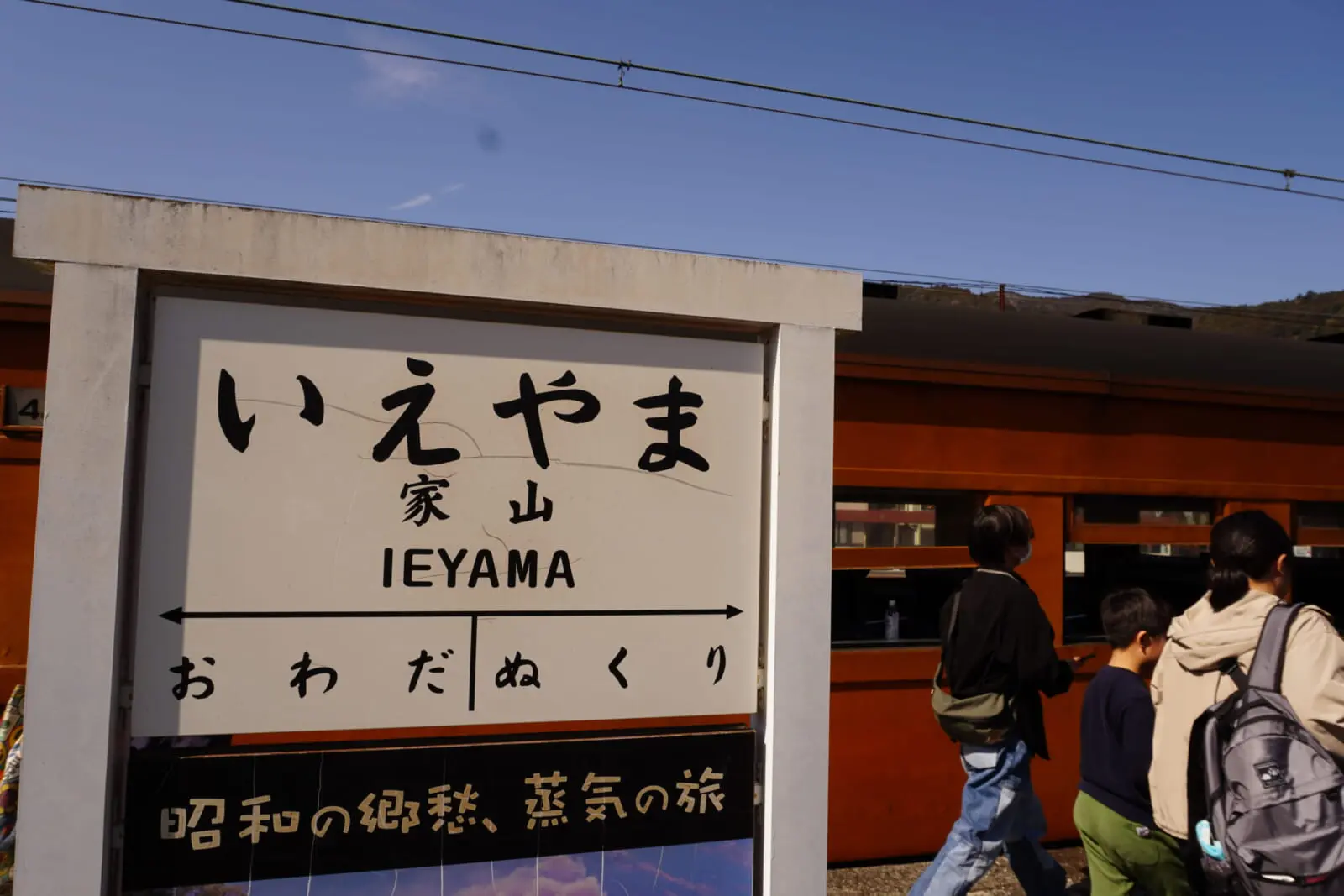
Ieyama Station: A Nostalgic Pit Stop
For a brief moment, the journey itself pauses. The steam train refuels, and so do its passengers. A brief walk outside the station, and you are struck by the immediate quiet.
Away from the whistles and clunks of the refueling train, you’ll find small cafés serving aromatic and flavorful green tea and traditional Japanese sweet shops selling locally made treats.
Just a brief walk away from the station on the riverside is the small but stunning Fureai Park, where the tantalizing smell of barbecue drifts over the water. It is particularly picturesque during the cherry blossom season.
A 10-minute walk from the station is Nomori Pond, which is home to fireworks displays, festivals such as Kawane Big Nature and traditional Bon-Odori dances.
For those eager to venture deeper into the mountains, this is the gateway. Buses departing from here will take you to Senzu and beyond.
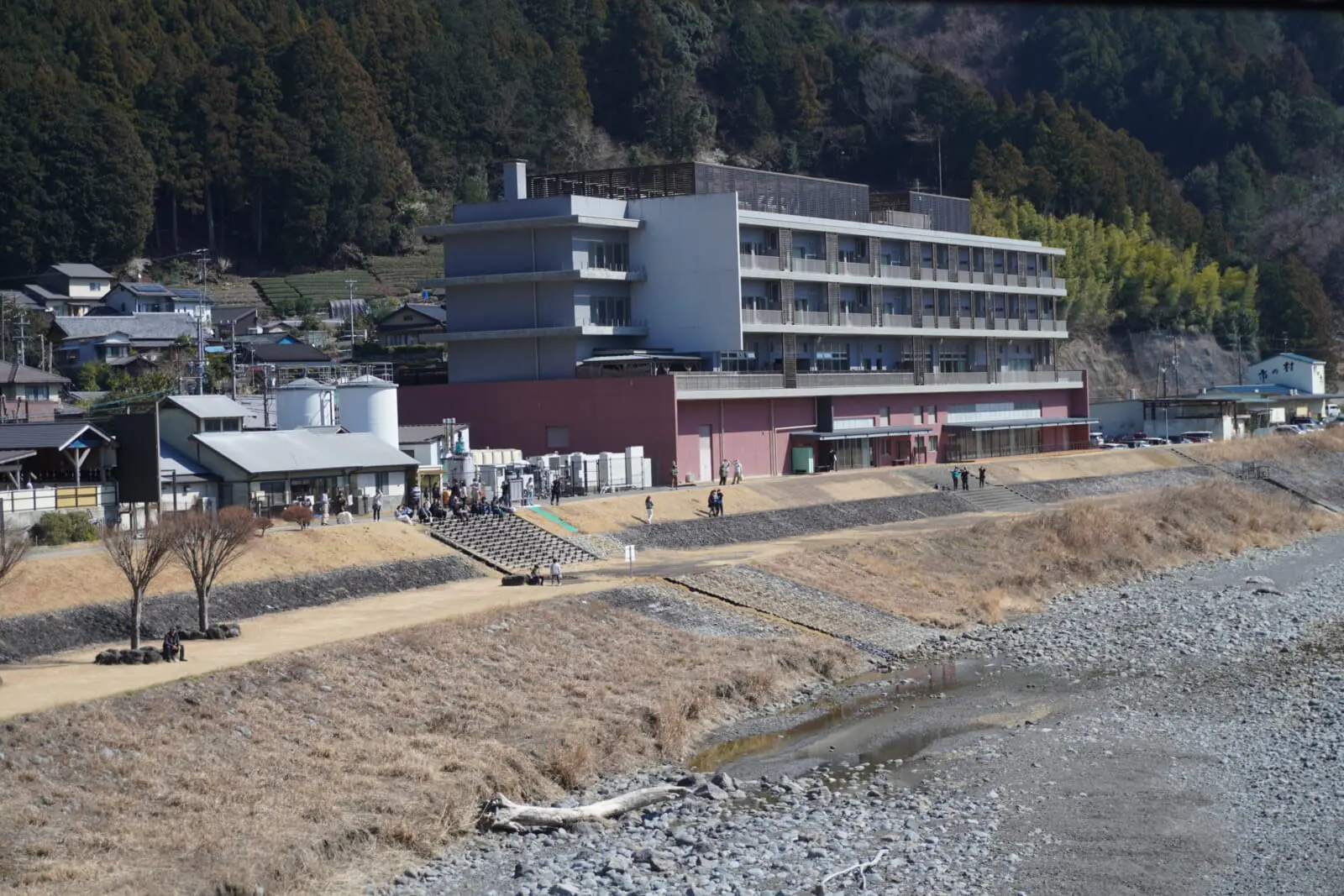
Kawane Onsen Hotel
End of the Line: Kawane Onsen Sasamado
Departing Ieyama, you are treated to another look at old Japan as yet more green tea fields roll past your window. However, as the train crosses the Oi River to your final destination, you are greeted by the amusing and surprisingly visible waves of bathers from Kawane Hot Springs.
In contrast to the rustic charm of old Kawane, Kawane Onsen Hotel offers a modern take on Japanese hospitality, with both Japanese and Western-style rooms, private onsen, saunas and a grand banquet-style restaurant. All windows to the hotel overlook the river and the train line, so for those who wish to stay, you are guaranteed a room with a view.
Both the male and female baths of Kawane Onsen provide a breathtaking view of the valley and train. As you immerse yourself in the mineral-rich salt water, the heat seeping into tired muscles, you can finally stop. Outside, the train whistles in the distance, a reminder of the journey that brought you here.
After a revitalizing soak, you should try the locally grown fresh fruit, such as the juicy oranges, as well as all dishes being made with locally sourced ingredients.
Leaving Kawane, you carry a reminder that not all of Japan moves at the speed of the bullet train. Some places, like the tea fields and the onsen, exist in their own time. And sometimes, slowing down is the best way to travel.

